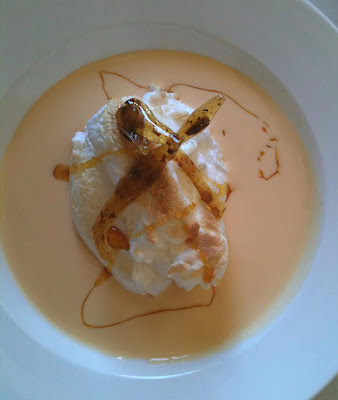First published Canberra Times 26 October 2011.
With our body-aching recent house move over,
and the days getting longer and warmer, I settle down to prepare and mulch my
new vegetable patch, in readiness for planting.
I usually plant a crop of tomatoes each
year, because store bought ones just don’t compare. As the season approaches I
look forward to bottling my own tomatoes to provide the base for many of our
summer meals.
Is it me, or are the tomatoes that we buy
now missing the sweet intensity compared to those when we were kids? Mum would
send us up the road with a list to Mr Gorring, who sold his freshly grown produce
direct from his market garden. He was a hunched and wizened man, baked as golden-brown
as a roast potato, acquired from his time in the sun tending his garden. He
spoke with a strong German accent and I never saw him dressed in anything other
than shorts and sandals and an aged, brown leather apron.
We would stand in front of his old table
with a set of suspended scales hanging above and recite our order to him from
our list. With nothing but a curt nod he walked off slowly to pick the vegetables
straight from the garden. He came back to the table to weigh each variety of
vegetable meticulously, and charged us for every ounce. Mum would always warn
us to watch for him putting his hand on the scales.
Although Mr Gorring never made small talk,
and made it clear he didn’t appreciate our over enthusiastic dog, he had the very
best and freshest of vegetables on offer.
As we walk home barefoot, with the string
bag stretched tightly around our newspaper wrapped vegetables, the herbal, tomato-leafy
aroma wafts from our parcel of freshly picked produce. Today that same smell still
triggers this odd fragment of memory each time I pick my own home grown.
To manage my annual yield of tomatoes, I preserve
the excess in bottles. This is an easy
method that is packed with flavour. Wipe the tomatoes, slice out the cores, and
pack them whole, including the skins, into sterilised jars. I use medium sized
preserving jars with the rubber seal and wire clip. Add a few thyme sprigs,
some bay leaves and a couple of slices of onion. Ensuring the rubber seals are on properly, clip
the lids shut and put the jars on a round cake rack that fits in the bottom of a
deep pan. Add enough water to cover them well and weigh them down with
something heavy if they float. A rock will work. Simmer the jars for about 1½
hours until the tomatoes lose their shape and collapse. The jars will only be
half full when the tomatoes are ready. Leave the jars in the water to cool. The
lids will have formed a tight seal and the tomatoes will keep for about 12
months.
I like to make this soup with my harvested home
bottled tomatoes, although you can use tinned, peeled tomatoes or fresh ones. The
complimentary orange and tomato flavours in this soup make a great summer lunch
that can be eaten hot or cold.
Serves 4
1 kg fresh tomatoes, cored and peeled or 500ml
of above bottled or store bought canned tomatoes
2 tbsp olive oil
1 large onion, sliced
2 garlic cloves, chopped
3 bay leaves
3 stems thyme
1 tspn sugar
half a bunch of basil
1 tbsp of orange zest and juice of 2
oranges
1 baguette
½ cup grated gruyere cheese
salt and freshly ground pepper
olive oil for brushing bread
Roughly chop the tomatoes. Heat the oil in
a large saucepan and fry the onions until tender but not golden for 5 to 7
minutes. Add the garlic and continue cooking until soft, 1 to 2 minutes. Add
the chopped tomatoes and any juice, with just enough water to cover. Add the
bay leaves, thyme, sugar, salt and pepper and cover the pan with the lid. Bring
the soup to the boil, then reduce to a simmer until the tomatoes are very
tender, about half an hour.
Meanwhile, heat the oven to 175C and slice
the baguette into slices and put them on a tray. Brush each one with olive oil on both sides.
Bake them until dry and lightly golden for about 10 minutes, then top with the
grated cheese and return to cook until browned. Remove from the oven.
Strip the basil leaves from the stems and
add them to the simmering soup. Shred the leaves and set aside. When the soup is
cooked, remove the herbs and basil stems and puree the soup in a food
processor. Return the soup to the pan and bring to the boil. Stir in the
shredded basil, orange zest and juice. Taste for salt and pepper.
Serve soup in large bowls and add a round
or two of cheese-topped baguette to each one.
Photos Steve Shanahan








